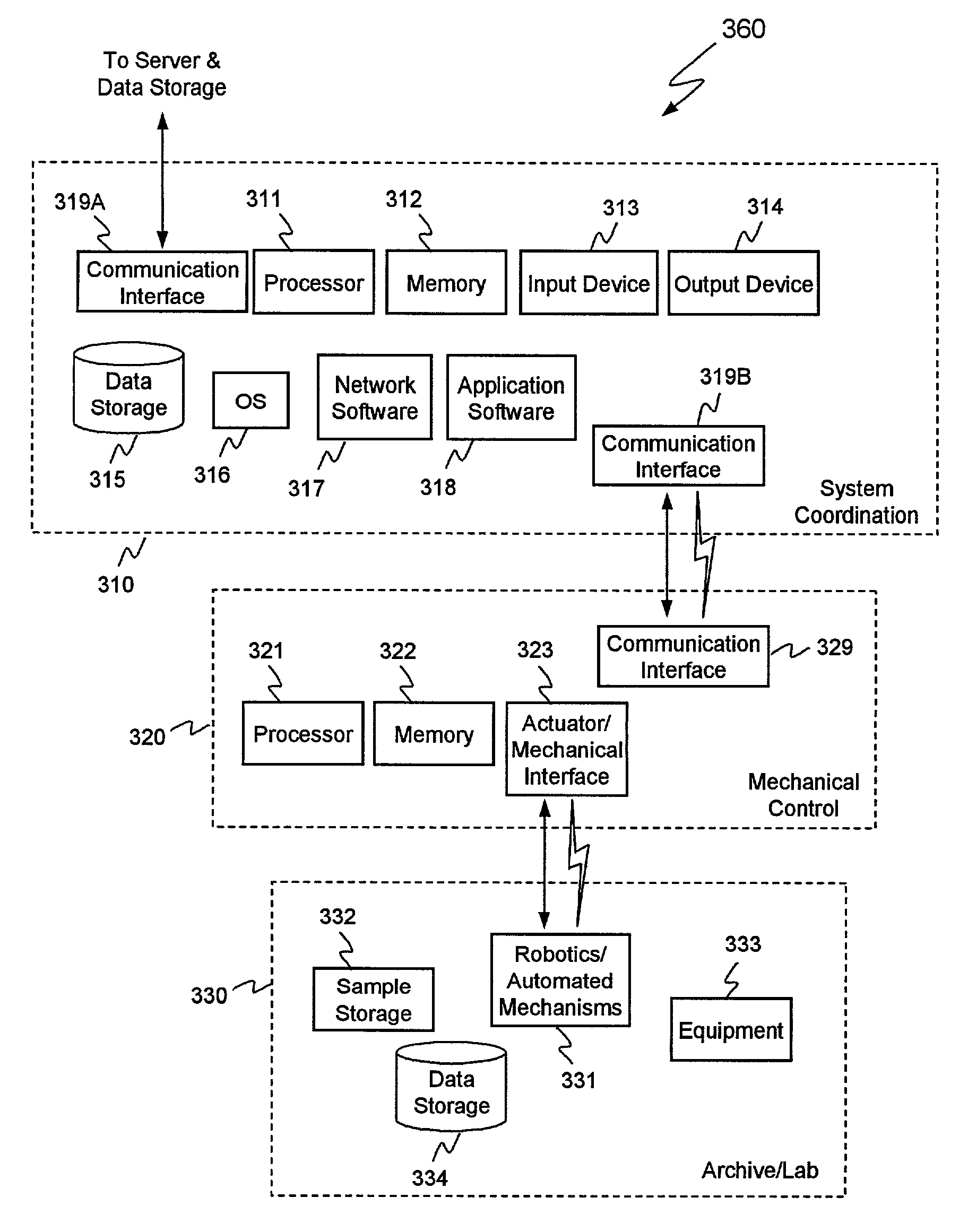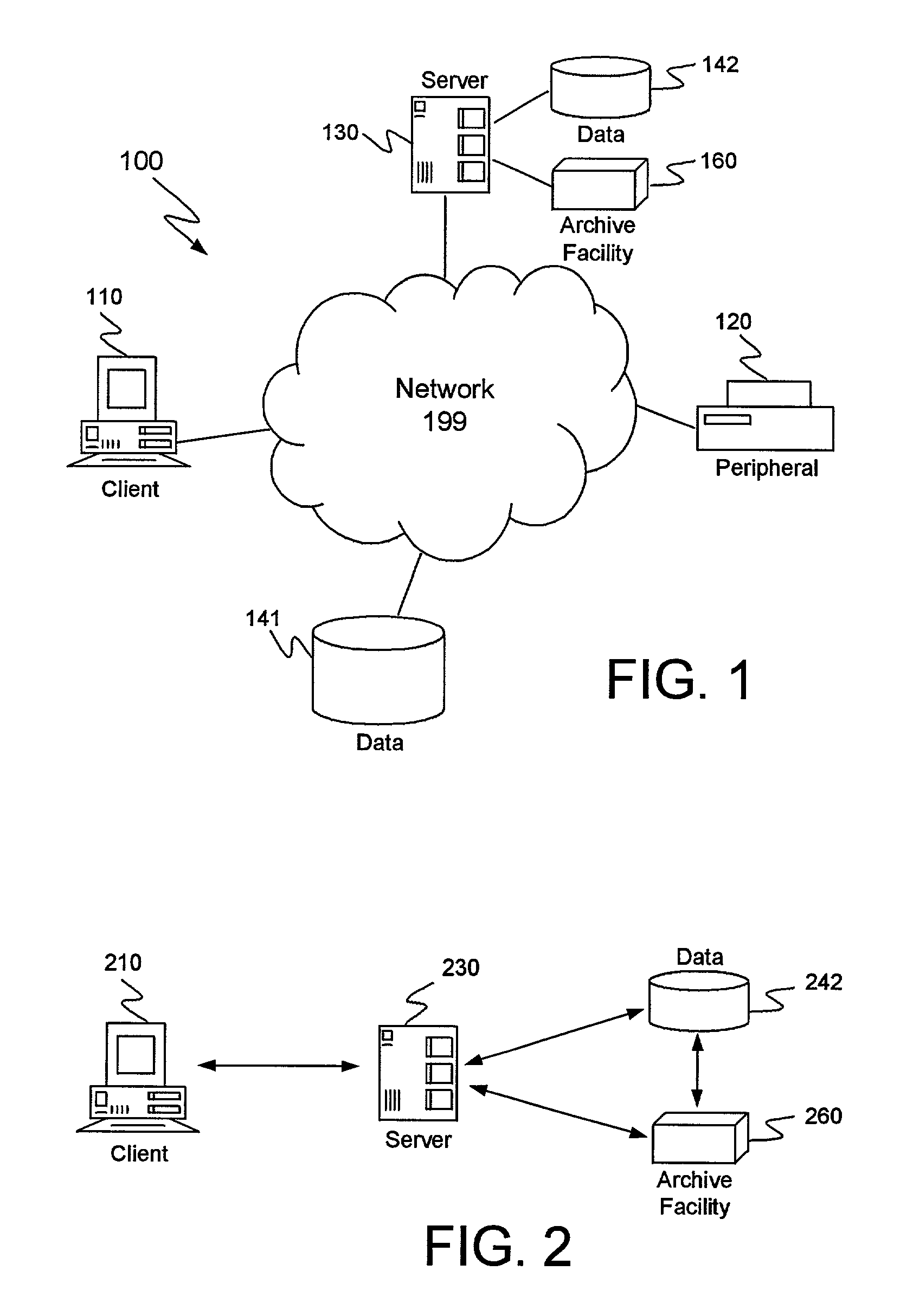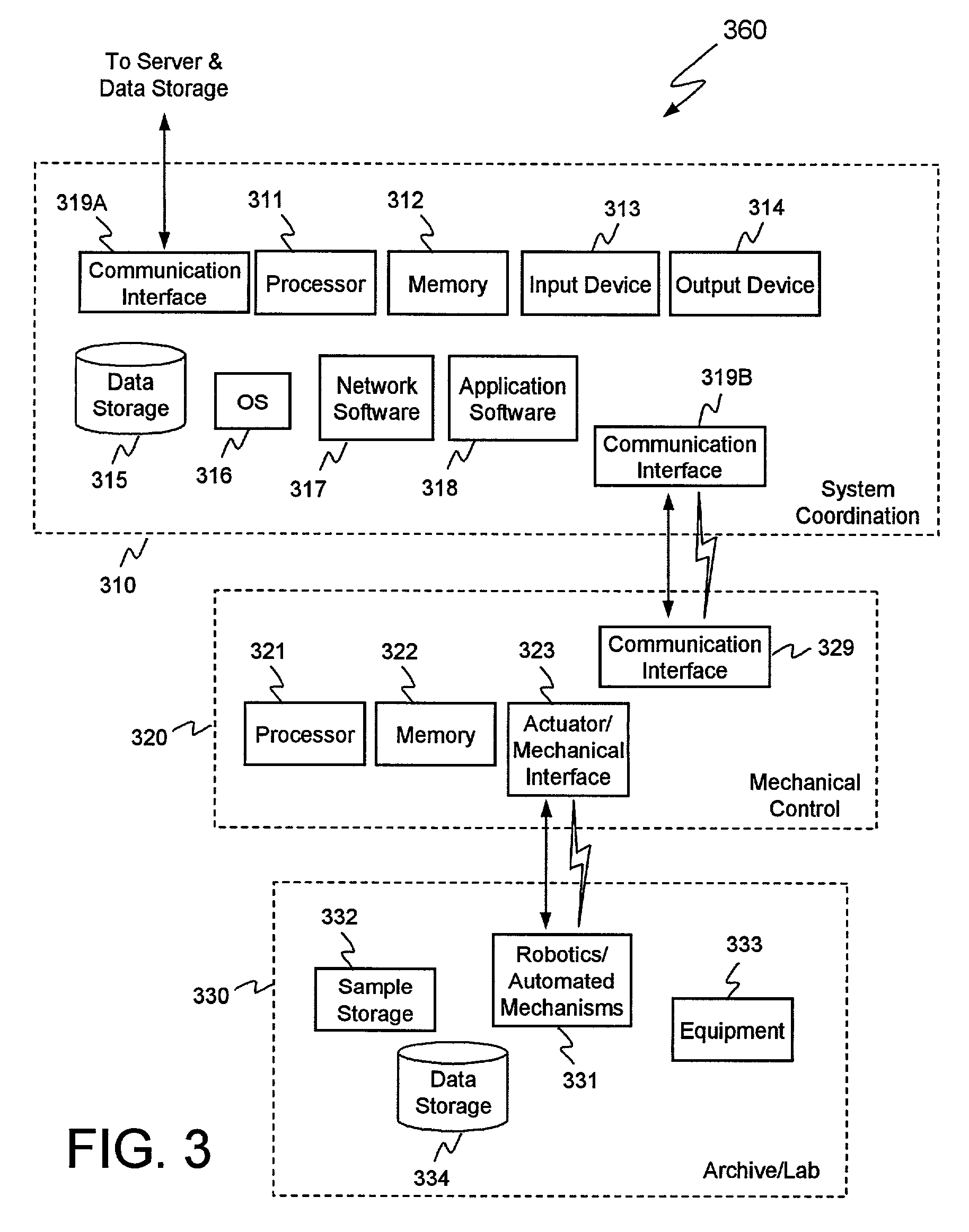Automated biological sample archive for storage, retrieval and analysis of large numbers of samples for remote clients
a biological sample and automated technology, applied in the field of sample material archiving, can solve the problems of complex and laborious maintenance and administrative responsibilities of system operators, inability to meet high volume processing and sample throughput, and insufficient storage and retrieval rates of biological samples. achieve the effect of efficient search and timely transportation, high storage and retrieval ra
- Summary
- Abstract
- Description
- Claims
- Application Information
AI Technical Summary
Benefits of technology
Problems solved by technology
Method used
Image
Examples
Embodiment Construction
[0079]Turning now to the drawings, FIG. 1 is a simplified block diagram illustrating one embodiment of an automated sample archival and retrieval system. In the exemplary FIG. 1 embodiment, system 100 generally comprises one or more remote computers or terminals, such as network client 110, coupled to one or more servers, such as server 130, via a communications network 199. System 100 may also comprise data storage media and peripheral equipment, represented by reference numerals 141 and 120, respectively.
[0080]For clarity, only one server 130 and one client 110 have been depicted in FIG. 1. Those of skill in the art will appreciate that the arrangement illustrated in FIG. 1 is presented for illustrative purposes only, and that system 100 may be implemented with any number of additional servers, clients, or other components; the number and variety of each device coupled to network 199 may vary in accordance with system requirements. In some embodiments, the functionality of one dev...
PUM
 Login to View More
Login to View More Abstract
Description
Claims
Application Information
 Login to View More
Login to View More - R&D
- Intellectual Property
- Life Sciences
- Materials
- Tech Scout
- Unparalleled Data Quality
- Higher Quality Content
- 60% Fewer Hallucinations
Browse by: Latest US Patents, China's latest patents, Technical Efficacy Thesaurus, Application Domain, Technology Topic, Popular Technical Reports.
© 2025 PatSnap. All rights reserved.Legal|Privacy policy|Modern Slavery Act Transparency Statement|Sitemap|About US| Contact US: help@patsnap.com



